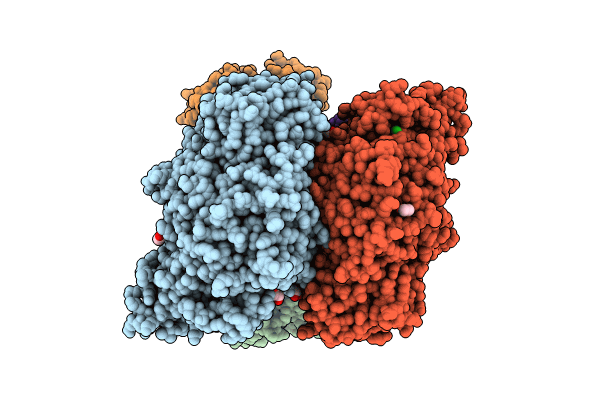
Deposition Date
2023-12-19
Release Date
2024-10-02
Last Version Date
2025-04-16
Entry Detail
PDB ID:
8RIU
Keywords:
Title:
Crystal structure of the F420-reducing carbon monoxide dehydrogenase component from the ethanotroph Candidatus Ethanoperedens thermophilum
Biological Source:
Source Organism:
Candidatus Methanoperedenaceae archaeon GB50 (Taxon ID: 2691038)
Method Details:
Experimental Method:
Resolution:
1.89 Å
R-Value Free:
0.18
R-Value Work:
0.16
R-Value Observed:
0.16
Space Group:
P 21 21 21


